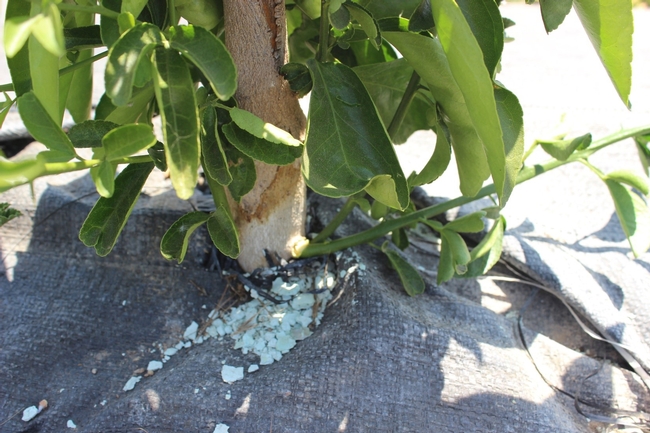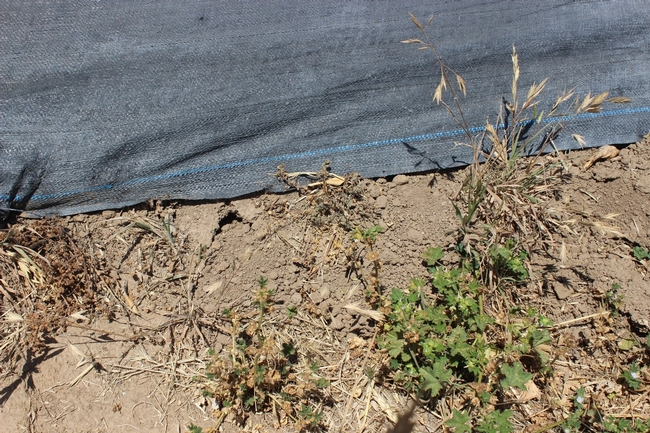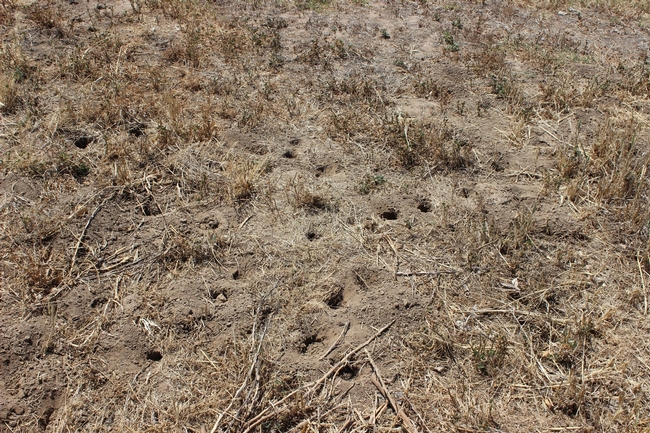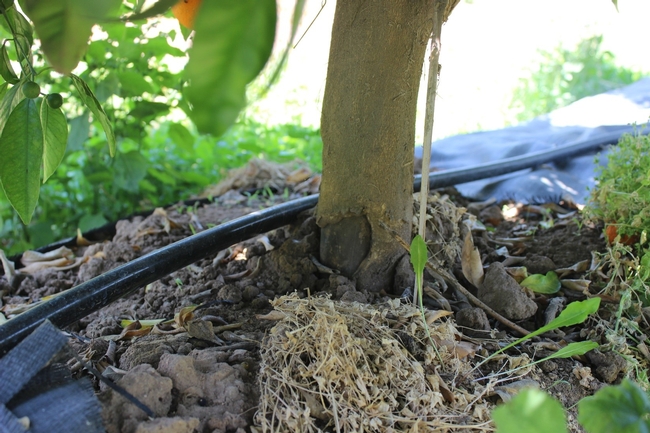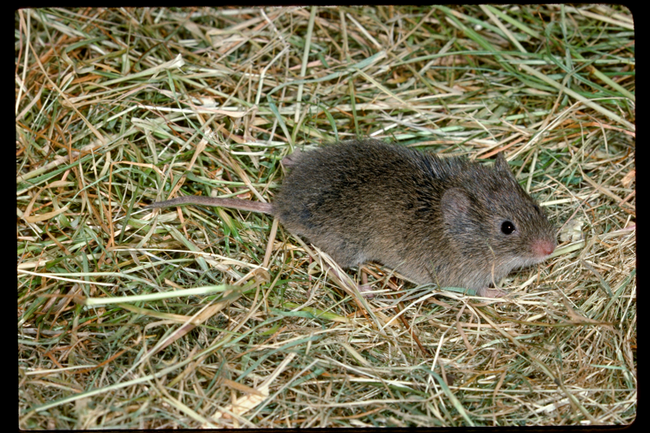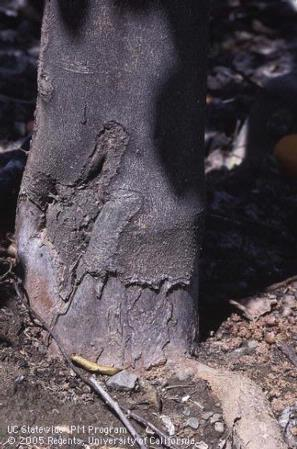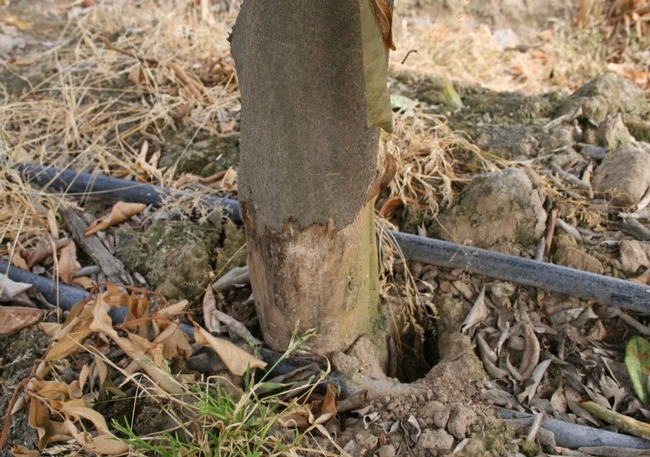Since the first publication of this article on vole damage in citrus, a recent field observation regarding vole activity is worth noting. Voles prefer a situation where there is cover and shelter generally from weed or grass. In some orchards established in the last few years a plastic strip has been installed along the tree row for weed management (Fig 1). These strips appear to be offering a sheltered environment for vole activity in some cases (Fig 2). Recent observations in two such installations, one a block planted in 2013 and the other an eight year old planting exhibited significant vole activity. The young orchard at this point does not exhibit obvious tree damage although active tunneling is apparent (Fig 3). In the older orchard feeding damage to the trunks is very obvious (Fig 4).
Meadow Mice (Voles) can cause serious damage in a citrus orchard resulting in partial or complete girdling of a tree (Fig 5). Trees often exhibit damage to the bark of the tree from the soil line up 6-8 inches (Fig. 6 ). On close inspection, an open hole 1-1.5 inches in diameter may be found at the base of the tree (Fig 7).
Five species belonging to the genus Microtus are found in California, two of which “Microtus californicus” and “M.montanus” are reported to cause damage. Damage has been reported in permanent pasture, alfalfa, hay, artichokes, Brussels sprouts, carrots, cauliflower, potatoes, sugar beets, tomatoes, grains, nursery stock and the bark of apple, avocado, citrus, cherry and olive trees.
Microtus are often found where there is grass cover. They generally do not invade cultivated crops until the crop is tall enough to provide food and shelter. Meadow mice are active all year round. They forage at any time during the day or night but are chiefly nocturnal. They are usually found in colonies marked by numerous 2-- inch wide surface runways though matted grass. Small brownish fecal pellets and short pieces of grass stems along the runways are evidence of activity. The burrows consist of extensive underground tunnels, nest chambers and storage chambers. Home range is typically small, less than a 60 foot radius in the case of “M.californicus”. All meadow mice swim well. Therefore, irrigation ditches will not serve as effective barriers against meadow mice movement into fields. Meadow mice may forage beyond the sheltered runways. Food consists of tubers, roots, seeds, grain, and succulent stems and leaves.
Females breed at 4 to 6 weeks of age with litter size of “M.californicus” averaging around 4. Under natural conditions a female Microtus may produce from 5 to 10 litters a year. The major breeding season corresponds with the season of forage growth. Microtus populations build up to a peak every 3 to 4 years, followed by a rapid decline during the next breeding season. The exact causes of the cycle of buildup and decline are not known, though disease, food shortages, physiological stress from overcrowding, and other factors may be involved. It is assumed that in cultivated areas Microtus populations are permanently based in favorable habitat such as roadsides, canal banks or adjacent noncultivated land. Invasion of cultivated cropland occurs when the population builds up or when the wild habitat becomes unfavorable. Coyotes, badgers, weasels, snakes, hawks, owls, herons and gulls are among the principal predators. It is believed that predators are not able to prevent or control a population eruption because of the birth rate of the fast breeding Microtus population. Meadow mice are classified as nongame mammals by the California Fish and Game Code. Nongame mammals, which are found to be injuring growing crops may be taken at any time or in any manner by the owner/management. The most effective management options in an orchard situation are a reduction in ground cover and the use of toxic baits. Meadow mice are cover dependent. In situations where cover removal is not possible or is insufficient to solve the problem, the next best option is the use of toxic baits. Many bait carriers are used (e.g., oat groats, wheat bait). Baits: Crimped oat groats are the most satisfactory bait although crimped whole oats are used (e.g., oat groats, wheat grains, pelletized formulations, etc., but crimped oat groats have typically been most effective). The primary toxicants used for meadow mouse control include zinc phosphide, diphacinone, and chlorophacinone. Directions for management including baiting can be obtained by contacting the Agricultural Commissioner's Office. * Portions taken from J.P.Clark Vertebrate Pest Control
Attached Images:
